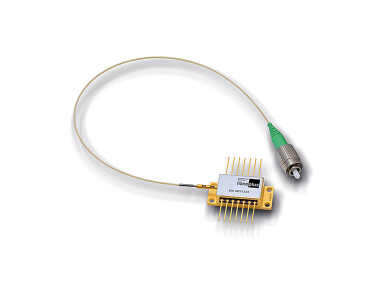Environmental Laboratory
Scientists Discover New Way to Remove CO2 from the Air
Nov 13 2019
Scientists from the Massachusetts Institute of Technology (MIT) believe they have struck upon a novel new way of removing carbon dioxide (CO2) from the air. The technique is revolutionary in that it is capable of detecting and capturing the gas at almost any concentration level, including as low as approximately 400 parts per million.
Additionally, their method does not require substantial amounts of energy and functions well without any chemical, pressure or thermal input whatsoever. As such, it’s significantly less resource-intensive and far cheaper than other methods of carbon capture and storage (CCS). After extracting the CO2 from the air, it can also discharge it into any desired flow stream, creating a marketable commodity of CO2 in its own right.
Battery powered
The device created by the researchers consists of a stack of charged electrochemical plates, which operate on principles similar to those found in a battery. As it is being charged up, the electrodes on the surface of the plates (which are coated with a substance known as polyanthraquinone) react naturally with the CO2 in the ambient air and affix themselves to it, removing the gas from the airstream.
However, when the battery is being discharged, the opposite process takes place. The electrodes lose all affinity with the carbon and it is simply released back into the environment, regardless of whatever kind of elements are present in the air. This means that it can be released into a pure CO2 jet stream and sold as a commercial commodity.
There are a wide range of uses to which this waste CO2 could be put, including for dosing commercial greenhouses and carbonating soft drinks. Alternatively, it could simply be compressed and injected into an underground reservoir for safe, long-term storage.
A range of benefits
The sensitivity of the electrodes to CO2 during the charging stage means that it’s a more effective method of carbon capture technology than traditional techniques, since it’s capable of trapping the gas even at concentrations as low as 400 parts per million. It’s also capable of releasing the gas into any stream of air, including one comprised of 100% CO2, which is something that has proven troublesome in the past.
“In my laboratories, we have been striving to develop new technologies to tackle a range of environmental issues that avoid the need for thermal energy sources, changes in system pressure, or addition of chemicals to complete the separation and release cycles,” explained Alan Hatton, one of those behind the study. “This carbon dioxide capture technology is a clear demonstration of the power of electrochemical approaches that require only small swings in voltage to drive the separations.”
Hatton and his colleagues envisage setting up two such devices in a busy power plant, with one in a constant state of charging (removing CO2 from the environment) and the other discharging (releasing it into a carrier stream). At present, the technology is capable of withstanding 7,000 cycles with only a 30% loss in efficiency, though the authors of the research believe they can improve their figures significantly.
Digital Edition
AET 28.4 Oct/Nov 2024
November 2024
Gas Detection - Go from lagging to leading: why investment in gas detection makes sense Air Monitoring - Swirl and vortex meters will aid green hydrogen production - Beyond the Stack: Emi...
View all digital editions
Events
Nov 26 2024 Paris, France
Nov 27 2024 Istanbul, Turkey
H2O Accadueo International Water Exhibition
Nov 27 2024 Bari, Italy
Biogas Convention & Trade Fair 2024
Nov 27 2024 Hanover, Germany
Dec 02 2024 London, UK









.jpg)









